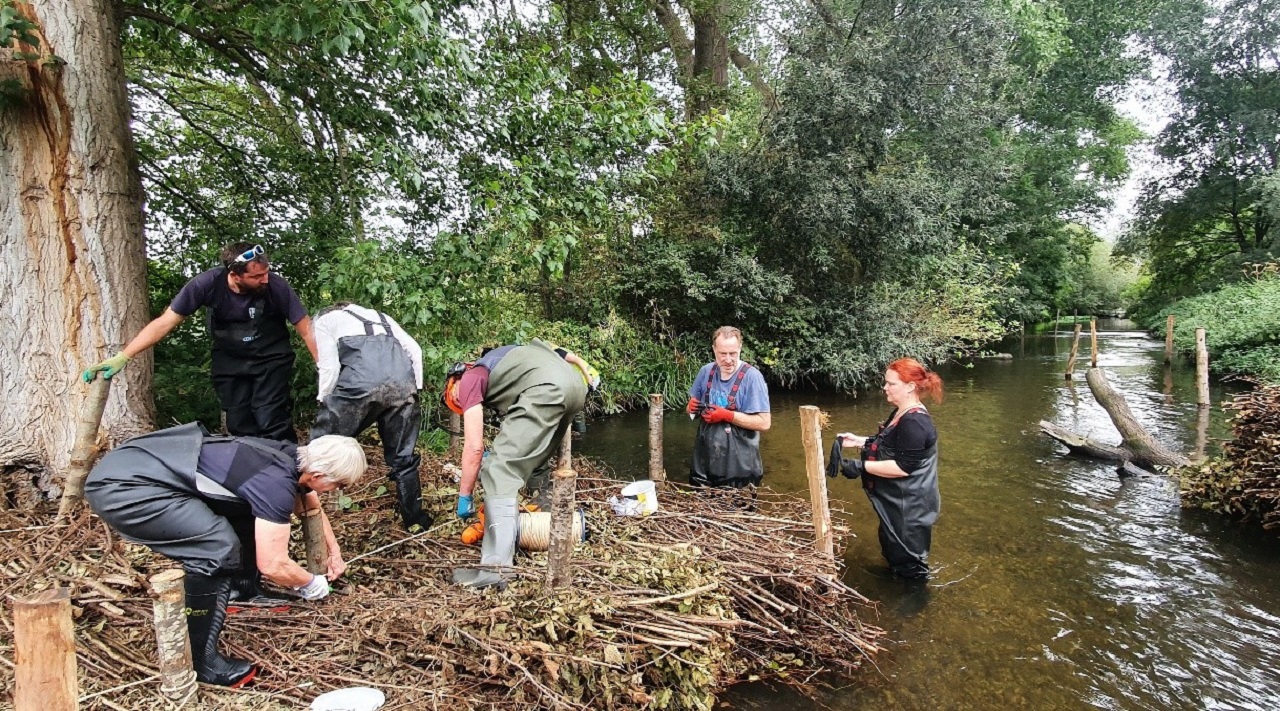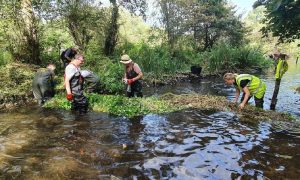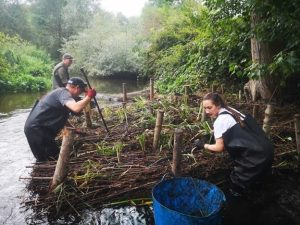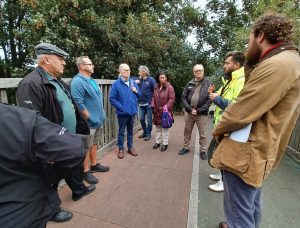Brown trout were able to return to the River Wandle and breed successfully for the first time in nearly 100 years thanks to the South East Rivers Trust’s work, Co-CEO Dr Bella Davies told the UK River Summit on Tuesday. Ian Lamont, our Communications Officer, reports.
An enthralled 100-strong audience at the second annual Summit heard that road runoff had been stopping trout spawning on the Wandle. The summit brought together campaigners, NGOs, politicians and industry experts to debate issues affecting rivers, in the historic setting of the National Trust’s Morden Hall.

Bella explained that a mechanical device called a hydrodynamic vortex chamber – effectively a big drum – had proven to be the solution to help brown trout thrive once more. It had been fitted to key parts of the river to filter out numerous chemicals and pollutants before they reached the Wandle.
Bella urged a captivated audience at the Summit to “implore policy makers to listen, investigate and do something about,” road runoff because the “solutions are there” to stop contaminants from roads reaching our rivers. She outlined the struggles to bring back brown trout, an iconic species, to the special habitat of this chalk stream, one of only about 220 such rivers globally.
The trouble trout had in the Wandle
A “top predator” and “keystone species” in the eco-system, brown trout had struggled to thrive in the Wandle because of pollution, with the last one caught there in 1934. The industrial revolution was huge in bringing about that scenario, but modern day road runoff had become the modern culprit, she explained.
One of the first projects run by the Wandle Trust (which later became SERT) was Trout in the Classroom, said Bella. School children helped breed the species, but after the fish were released they did not breed successfully in the river, surveys proved, despite Environment Agency data showing that the water quality was high.
Those who saw the Wandle regularly noted that the water turned black every time it rained. Conclusions were drawn that the cause was road runoff. A commissioned study by a Queen Mary university student identified 15 types of Polycyclic aromatic hydrocarbons (PAH) pollutants and copper in the river.
So how could the issue be solved?

A hydrodynamic vortex chamber was selected to capture the pollutants before they reached the river – and a year after its installation another EA fishery survey found there were 67 juvenile trout on a 200m stretch of the river.
“Urban pollution and road runoff are one of the three main sources of pollution in Britain alongside agriculture and sewage. It is the reason that 18% of water bodies fail their target of good ecological health. It is also massively underestimated and under-monitored,” Bella explained.
She added that road traffic sends about 300 toxic chemicals, for example from catalytic converters in vehicles, into rivers via drains. Microplastics, tyre wear, paint, rust, pesticides, road chemicals and garden runoff are other examples of sources of such pollution washed in by the rain.
Bella said about road runoff: “It’s toxic and much of it can’t be broken down by micro-organisms in the water environment. It’s persistent and it builds up in the sediment and can affect the entire eco-system.
“The impacts of road runoff are widespread and very scary. We know they can cause harm to insects and to human health. The PAHs are particularly nasty – they can affect an animal’s ability to reproduce…and can cause death outright, especially in the summer when it hasn’t rained for a while. When it rains, we often see fish kills because the contaminants have washed straight into the river.”
Describing how the vortex chamber worked, she said that dirty water goes into the device at the upstream side, the “big drum” retains the sediment and then cleaned water is sent into the river.
These had never been retrofitted into roads before, so our project leaders worked closely with manufacturers to make them work and fitted them on to the three main surface water drains coming into the Carshalton Arm of the Wandle.
“That was the first time trout had spawned successfully on the river for almost 100 years,” Bella stressed.
Other solutions to road runoff, she said, included nature-based ones such as wetlands, such as the Chamber Mead on the Hogsmill. Ideally both would be in place, with wetlands bringing amenity, flood and biodiversity benefits.
‘It gives me hope, but policy has to change’

Bella concluded: “These solutions give me hope that it is possible to tackle road runoff, but we need to do it everywhere. It is estimated that there are a million outfalls in the country and that’s probably underestimated. They are completely unmeasured and unregulated.
“I implore the policy makers to listen, investigate and do something about it. We have to shout louder to make sure this actually happens. We know there are effective solutions out there so let’s build them quickly.”
In her welcoming remarks, Bella invited people to “celebrate all rivers” but in particular the Wandle. “It’s unusual to be a chalk stream, it’s even more unusual to be an urban chalk stream and it’s even rarer to have one with a footpath all the way alongside it,” she said, referencing the Wandle Trail.
The Summit also gave us the chance to show attendees our volunteers’ work on the River Wandle at the National Trust-owned park. About a dozen people donned waders to cross the river and head to the main park for a guided river wade to see how our volunteers have turned a straight river into one flourishing with wildlife. Participants also had the chance to remove pennywort from the river next to Morden Hall, appropriately during Non-Native Invasive Species Week, which highlights how plants and animals that have come into our rivers cause them harm.
Click below to hear Bella’s full speech about the road run-off solution.





